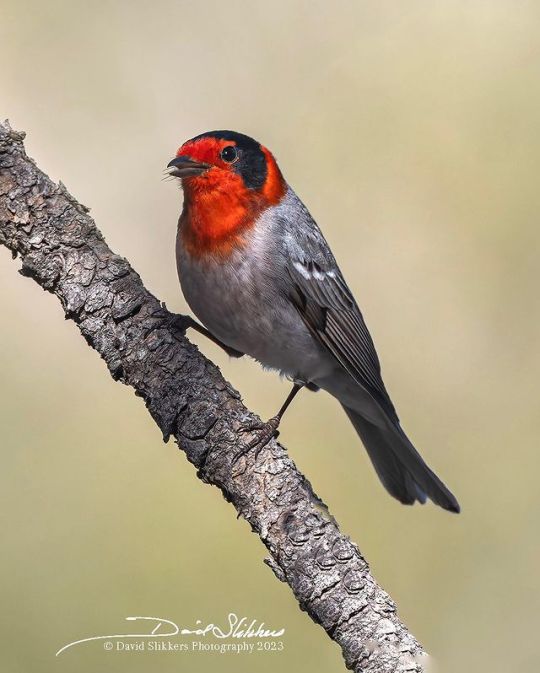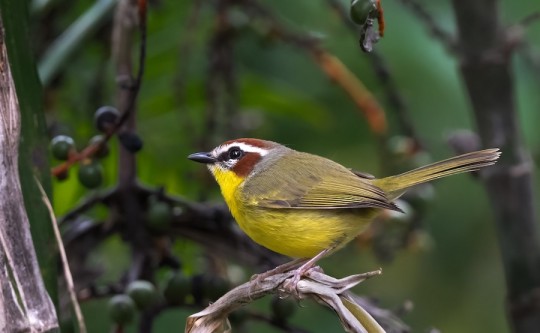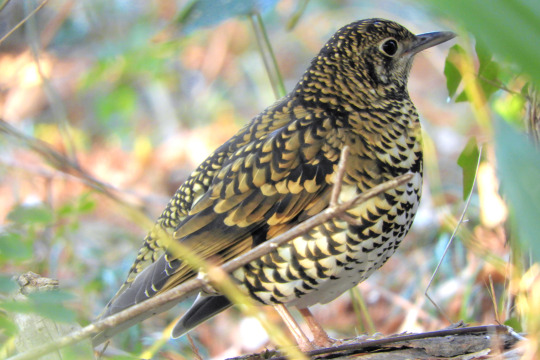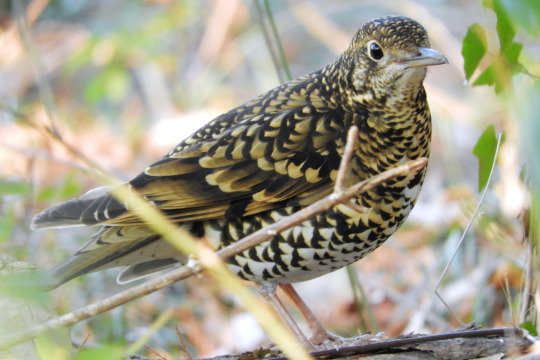Text
Genus: Setophaga
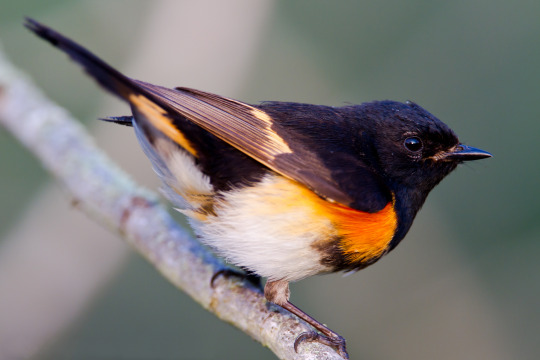
Originally, this genus was only used for the American Redstart (Setophaga ruticilla). Meaning 'moth-eater', it was used to refer to the flycatcher-like habits of the American Restart, which sallies forth from a perch to catch flying insects rather than plucking them from vegetation.
In 2010, however, a newly published paper disrupted what was thought of Parulidae taxonomy. Using a comprehensive molecular phylogenetic analysis of the family, several genus were merged into Setophaga. Not only that, but a separate genus of warbler was cleaved in two based on the findings.
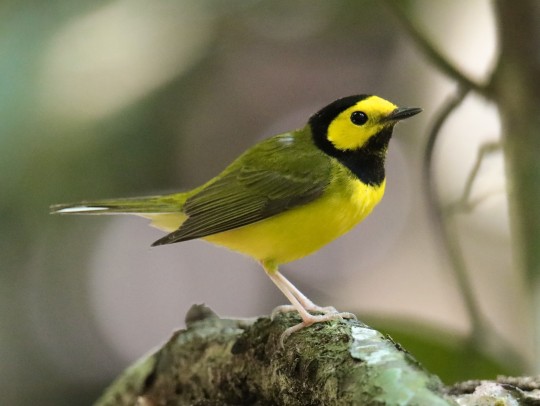
The Hooded Warbler was previously listed under the genus Wilsonia along with Wilson's Warbler and Canada Warbler. They had even been in an obsolete genus together before this (Sylvania), though this was changed to Wilsonia for other reasons. The 2010 study showed that Wilsonia was polyphyletic, meaning the group may share similar traits, but do not share a common ancestor. Hooded Warbler was moved to Setophaga and Wilson's and Canada Warbler were placed into Cardellina, an existing genus with Red-faced, Pink-headed, and Red Warbler.

The two Parula species were also folded into Setophaga as a result of the 2010 study. The Northern and Tropical Parula were originally the only two members of this genus, with the Northern Parula being the type-specimen of New World Warblers as a whole. I find that a bit ironic, as they are one of the smallest warblers and show quite an unusual color patter when compared to the rest of Parulidae, but I don't exactly know how type-specimen are chosen.

The largest genus to be merged with Setophaga was Dendroica. When I first began learning species names, I was familiar with this as the genus for most warblers. Due to the way taxonomic names work, the name which was published first takes precedent in these merging scenarios. So, despite the fact Dendroica had around 30 species and Setophaga had just 1, Setophaga was published first in 1827 (Dendroica in 1842).
In summary, Setophaga went from just a single species to now being the largest in the Parulid family, holding 34 species!
Image Sources: AMRE (Dan Pancamo); HOWA (Ninahale); NOPA (Dan Pancamo); MAWA (Cephas)
47 notes
·
View notes
Text

[730/10,977] Belding's Yellowthroat - Geothlypis beldingi
Order: Passeriformes
Suborder: Passeri
Superfamily: Emberizoidea
Family: Parulidae (new world warblers)
Genus: Geothlypis (yellowthroats)
Photo credit: Jim Hully via Macaulay Library
43 notes
·
View notes
Text

Louisiana Waterthrush - Southern Ohio by Matthew Studebaker
9 notes
·
View notes
Text

✧ A Mothers Revenge ✧
A kestrel seeks revenge on a European Starling after it kills and eats her chicks. In the U.S, European starlings have a devastating impact on our native ecosystems in the entire United States. This species is known for their aggression towards other cavity nesting birds, outcompeting native species for nesting spots and food sources. They’ve been known to kill many native species from bluebirds, to woodpeckers, to kestrels. They are violent towards competing species, destroying their nests, and pecking holes in eggs laid by other birds. Not to mention, they also destroy crops and devour multitudes of grain each year.
-
I wanted to portray something intense to kind of grab people’s attention to this problem. Most people don’t know how horribly invasive they are. While they’re pretty birds, they’re not meant to live in the United States. I wanted to use colors like red (to represent anger, sadness, revenge, betrayal) to portray what native species have to endure every year towards a bird that was never supposed to even come in contact with them. And colors like yellow (to represent wrongfully perceived innocence and guilt).
The spills of blood can be represented as the successful revenge the kestrel has, or, the multitudes of blood spilled from native species by European Starlings.
-
Did you know? All the European Starlings in North America descended from 100 birds set loose in New York’s Central Park in the early 1890s. The birds were intentionally released by a group who wanted America to have all the birds that Shakespeare ever mentioned. It took several tries, but eventually the population took off. Today, more than 200 million European Starlings range from Alaska to Mexico.
#did you kno: anecdotally ive heard it was like 18 attempts to introduce starlings#that they kept dying in cental park until finally they didnt#i really like this piece#i think anthropomorphizing the actions of starlings is like.. weird bc theyre also just trying to survive#but yeah they do A Lot of damage. even without the nest destruction they are huuuuuge vaccuum cleaners#a lot of blackbirds struggle bc starlings sit in the same niche as far as food goes
3K notes
·
View notes
Text
You wouldn’t think that flamingoes are extremophiles just from looking at them. It’s like somebody tried to build the vertebrate equivalent of that fungus that lives inside nuclear reactors, and ended up with a gangly pink dinosaur with a spoon for a face.
192K notes
·
View notes
Text
Here, have a spark of hope.
The reality is that no single person can fix the entirety of the current ecological imbalance that has been literally centuries in the making at this point. Yet there are so, so many of us who care, and who are doing what we can to make a difference in whatever every day to day ways we're able. I often think of conservation efforts like the Loren Eiseley story "The Star Thrower" (aka, "the starfish story"). Amid a beach full of stranded starfish, one person cannot possibly save them all, but they can spend what time they have saving those they're able.
And this study shows that these efforts do, in fact, make a difference, not just for starfish but a myriad of species. This meta-analysis of almost 200 studies definitively proves that conservation preserves and restores biodiversity, keeping more species from going extinct. It's all too easy to get entangled in the losses, but we even more need to allow ourselves to celebrate the wins.
That success is crucial to convincing governmental entities and other stakeholders that putting funds toward conservation efforts makes a significant difference and is not only worth the investment, but worth increasing. And, on a personal level, it's necessary for those of us who care so deeply for this world to know when our efforts are having an impact, to buoy us up when the anxiety and grief over ecological destruction wears us down.
There is hope. Keep it up, folks; it's helping <3
391 notes
·
View notes
Text
What's the Bird?
Location: Ireland
Date: January
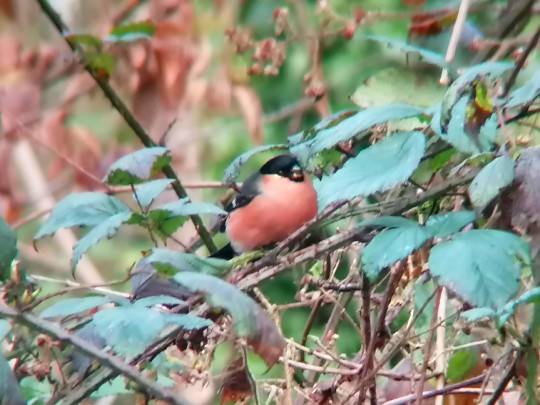
We ask that discussion under questions be limited to how you came to your conclusion, not what your conclusion was.
Happy Birding!
Keep the game alive! Submit a bird HERE
35 notes
·
View notes
Text
Polls are back on starting tomorrow!! I will probably be annoying about them this week just to get them visible again, so tag NWW Showdown if you don't want the clutter.
#also let me know if they need re-tagged#im pretty sure so long as the original post is tagged then any reblogs will filter as well#but maybe thats just a 'tumblr broke' bug and not a feature#anyways they sat in my drafts for a full month bc i was gonna do Fun Facts and then got overwhelmed w work/school
8 notes
·
View notes
Photo
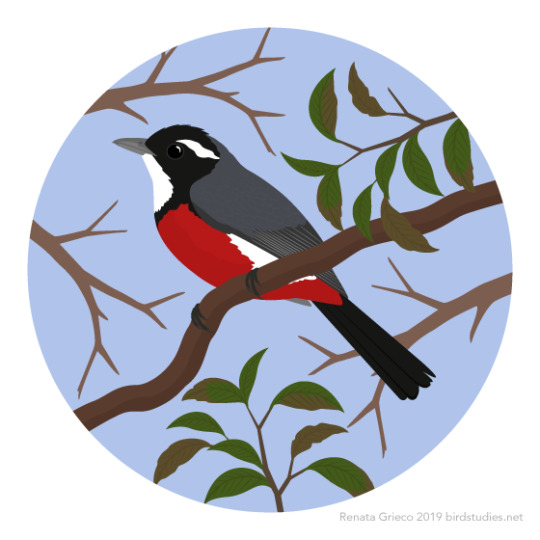
March 22, 2019 - Rose-breasted Chat (Granatellus pelzelni)
Found in parts of Colombia, Venezuela, Guyana, Suriname, French Guiana, Brazil, and Bolivia, these chats live in lowland forests. They likely eat mostly insects and other invertebrates, foraging mostly at middle to high levels of the forest and sometimes joining mixed-species flocks. Little is known about their nesting behavior, though their breeding season may be between January and May.
61 notes
·
View notes
Photo

Worm-eating warbler … Redden State Forest, Georgetown, Delaware … 5/2/21
26 notes
·
View notes
Text
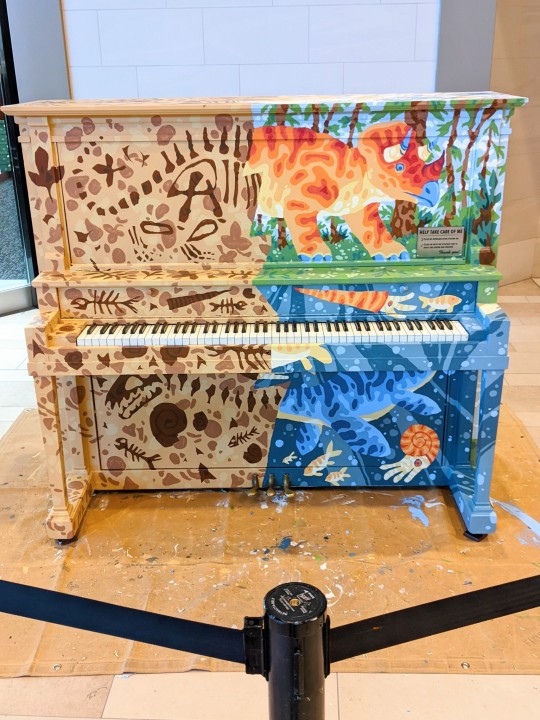

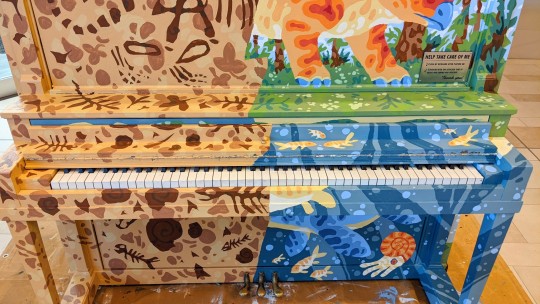
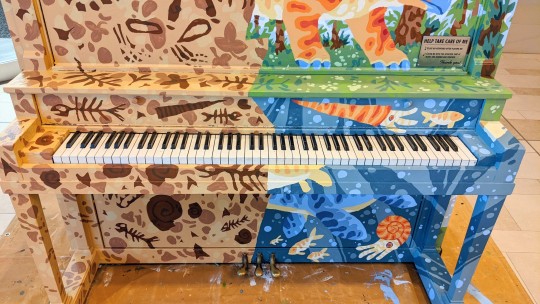

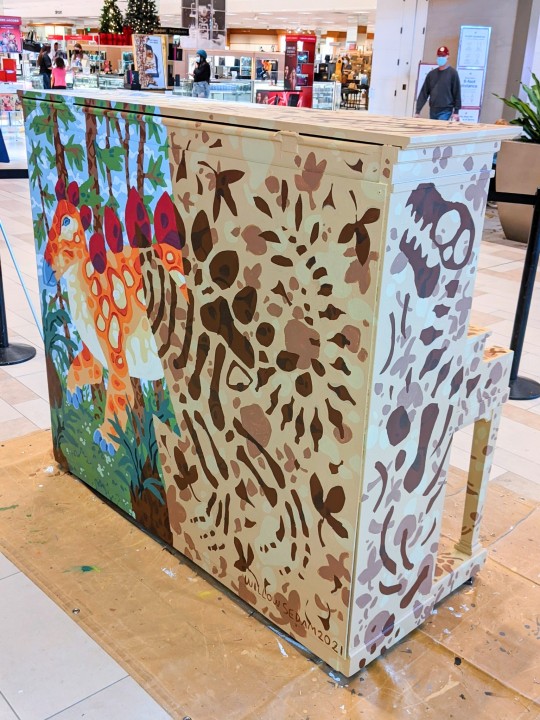



behold: what has been taking up my time for the past two and a half weeks!
this piano was a public art commissions for the city! it's covered in dinosaurs that have actually been found (and in the case of 3 of them, discovered) in my home state of colorado. i'm super happy with how it turned out and i had a blast painting it :^)
[image id: a piano painted with various dinosaurs. the left half of the piano represents the dinosaurs in their fossilized form as bones surrounded by fossil leaves and debris. the right half of the piano is the dinosaurs alive in their natural environments. among the species featured are fish, ammonites, orthocones, a plesiosaur, pterosaurs, a brontosaurus, a triceratops, a stegosaurus, and a fruitadens]
23K notes
·
View notes
Photo

Art Nouveau thing I did in 2014 - Raptor Nouveau #artnouveau #dinosaur #deinonychus #raptor #art #illustration #digitalart #paleoart
221 notes
·
View notes
Text

August 10, 2021 - Southern Riverbank Warbler (Myiothlypis rivularis)
These wood-warblers are found near lowland forest streams and swampy areas in southeastern Brazil, eastern Paraguay, and northeastern Argentina. They eat mostly insects and other arthropods, foraging on the ground along stream banks and on fallen logs. Though little is known about their breeding behavior, they likely build their nests from grasses and leaves and lay clutches of two eggs. The lower frequency of their songs allows them to be heard in dense vegetation and near running water.
62 notes
·
View notes
Text

warbler season! my collection with Bird Collective is up!
3K notes
·
View notes
